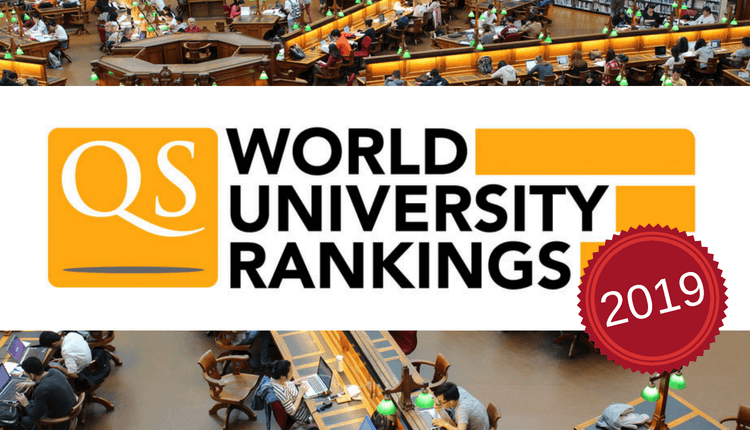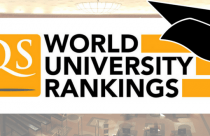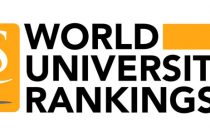2019 QS World University Rankings Released

We are halfway through the year, and it’s time that we release the top university rankings for the upcoming session. Several leading organizations release their world university rankings. Quarcquarelli Symonds, (QS), the British company that specializes in education, has released its World University Rankings for 2019. The 2019 QS list ranks the Massachusetts Institute of Technology as the number one university in the world. Let us find out more about these rankings.
Quarcquarelli Symonds, (QS) & its Rankings
Quarcquarelli Symonds (QS) is a well-recognized name in the field of education. It began as a student initiative while its founder and CEO, Nunzio Quarcquarelli, was completing his MBA at the Wharton School of the University of Pennsylvania. The QS World University Ranking lists over 1000 universities and can be sorted by country and region. It is the only international ranking to have received International Ranking Expert Group (IREG) approval. Such rankings greatly assist prospective students in choosing their universities for higher education.
As mentioned before, Massachusetts Institute of Technology (MIT) has topped the list. It has been at this QS rating for a record-breaking seven years. Besides, the highest overall score, it also scored highest in categories such as Academic Reputation, International Faculty and Faculty Student ratio.
The top ten universities in the world are as follows:
- Massachusetts Institute of Technology (MIT)
- Stanford University
- Harvard University
- California Institute of Technology (Caltech)
- University of Oxford
- University of Cambridge
- ETH Zurich – Swiss Federal Institute of Technology
- Imperial College London
- University of Chicago
- University College London (UCL)
Methodology
The QS methodology generally uses six metrices to configure the list. Academic reputation has the highest score coming in at 40%, followed by Faculty/Student Ratio and Citations Per Faculty both at 20%. Employer Reputation is 10% of the score, followed by 5% each in the categories of International Faculty Ratio and International Student Ratio.
The QS World University Ranking is based on four key pillars and six “ingredients” – these last being the six categories used in their methodology. The pillars – teaching, research, employability, and internationalization – are assessed using these six categories. The popularity and reputation of the QS World University Rankings also contribute in such compilations as the Global Innovation Index and the Bank of Communications Sea Turtle Index. Only three universities have ever held the top spot. They are MIT, the University of Cambridge and Harvard. Due to the popularity of these rankings, its release has come to constitute a social media event on Facebook and Twitter, reaching about 18 million accounts the first week of launch.
How to Use the Rankings
However, there is some controversy over the authenticity of the QS World University Rankings as a definitive tool. Clearly, by using different criteria, the outcome will be a different ranking for the same university. The Times Higher Education tables will give different ranking results, as will the highly admired Shanghai Ranking. However prospective students should use each as a tool in combination with the others to make an assessment. Each has its value as well as significant drawbacks.
Moreover, each of the rankings focuses on different fields of study. The Shanghai Ranking, driven by the Chinese government, concentrates on research. If instead, your focus is in humanities, the Shanghai Ranking may not prove as useful. Additionally, some researchers consider the QS World University Rankings too volatile, being based largely on surveys.
However, some researchers feel otherwise. They consider having more rankings is better. By using all the tools available, reading up on them, and making comparisons, the prospective student can make the choice that is right for him/her and his/her academic aspirations. Seeing where each university stands in different tables can be quite informative, as scouring for information on social media. All of these may help to showcase various strengths and weaknesses of the universities.
To sum up, several things make up a university choice. Thumbing through the QS World University Rankings can be a monumentally big first step in taking control of your future.
Have you been through the QS World University Rankings 2019? How helpful have they been to you? Please share your thoughts with us in the comments section below.






